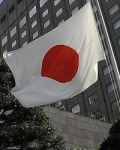-
Greater Bay to be an economic powerhouse
HONG KONG, Macau and nine cities in Guangdong are set to form China’s Greater Bay Area as the concept of 70 million people integrating to become China’s technology, innovation and financial services hub moves towards reality . . .
TO understand the thinking behind China’s Greater Bay Area (GBA) concept for the Pearl River Delta, one has only to look to the Greater Tokyo Area, Greater New York or the San Francisco Bay Area.
China’s vision would see a closer economic cluster of 11 cities, including Hong Kong, Macau, and nine in Guangdong’s Pearl River Delta create an economy as vibrant as those of Tokyo, New York and San Francisco.
The GBA already has a collective economy of US$1.4 trillion — equivalent to 12 per cent of Mainland GDP. It would have a greater population mass of around 70 million, but a lower combined GDP than Greater New York (US$1.61 trillion) or Greater Tokyo (US$1.78 trillion).
Hong Kong’s Chief Executive, Carrie Lam, said in November that the Governments of the Special Administrative Regions of Hong Kong and Macau, together with a number of cities in Guangdong, are working with China’s Central Government to map out a development plan for the Greater Bay Area.
Lam says the plan is due to be completed next year, and China’s State Council will then need to approve it. Following that, a lot of work will need to be done to turn the concept into reality.
In terms of physical connectivity in the GBA, three important projects will be commissioned next year.
One of these is commissioning of the Hong Kong-Macau-Zhuhai bridge, which will cut the journey between Hong Kong and Zhuhai from four hours to 45 minutes.





